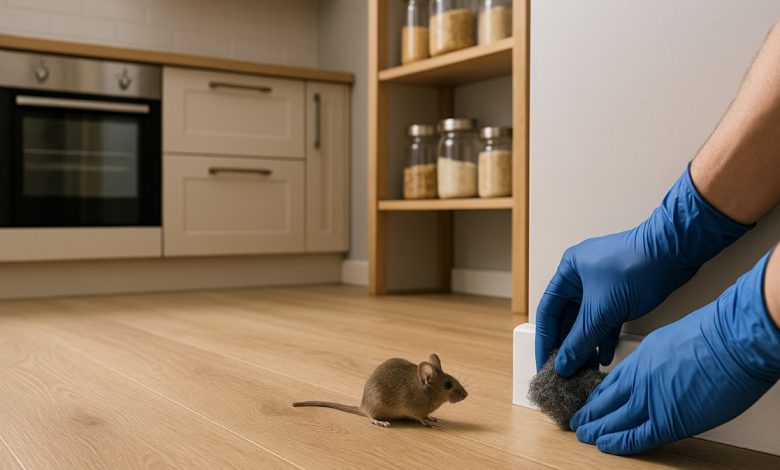Rodent Control Mistakes: The Critical Step People Forget

Rodents are one of the most common pests affecting homes and businesses. They’re more than just a nuisance; they contaminate food, spread diseases, and cause expensive property damage by gnawing on wiring, insulation, and stored goods. For many people, the sight of a mouse darting across the kitchen or a rat scurrying in the shed is enough to spark a rush for traps and poisons. While these methods can reduce the immediate problem, they rarely address the deeper issue.
The truth is that the most effective rodent control doesn’t come from killing pests already inside; it comes from stopping them from getting in at all. And this is the step that’s often overlooked: prevention through exclusion and sanitation.
Understanding Rodent Behaviour
Rodents are survival-driven creatures. Their instincts push them to seek out food, water, and shelter, often in human environments where these essentials are easily found. What makes them so challenging is their adaptability. A mouse can squeeze through a gap as small as a five-cent coin, while rats are strong climbers and burrowers capable of accessing hidden entry points.
On top of this, their reproductive rate is alarming. A small infestation can grow into a serious problem in just a matter of weeks if left unchecked. This explains why simply setting traps or spreading baits isn’t enough; you may catch a few, but unless you block access and remove attractants, more will come.
The Common Approach to Rodent Control
Most households and businesses rely on the same standard set of measures:
- Traps – snap traps, glue boards, or electronic options designed to kill or capture.
- Rodenticides – chemical baits that eliminate rodents but pose risks to pets and wildlife if misused.
- Professional services – pest technicians using a mix of chemical and non-chemical approaches.
These methods certainly reduce rodent numbers and are sometimes necessary for active infestations. The problem, however, is that they only deal with the rodents already inside. Once new rodents find the same access points or food sources, the cycle begins again.
The Overlooked Step – Prevention
The critical step in rodent control is exclusion, ensuring rodents cannot enter. This requires a thorough inspection and effort to identify gaps, holes, and openings that often go unnoticed. Many homeowners skip this step because it feels time-consuming or less urgent than killing the pests they can see. But prevention is the only way to stop reinfestation.
Some common entry points include:
- Cracks in foundations and walls.
- Gaps under doors and broken door sweeps.
- Open chimneys or damaged vents.
- Holes around pipes and utility lines.
Alongside exclusion, sanitation plays a vital role. Rodents thrive in places where food waste, pet food, or clutter is left accessible. An untidy bin or unsealed pantry is an open invitation for pests.
Practical Steps for Rodent Prevention
The good news is that prevention doesn’t require expensive solutions, just attention to detail and consistent upkeep. Here are some proven steps:
1. Seal Entry Points
Use steel wool or wire mesh to block small holes. Apply caulking or mortar to cracks in walls and floors. Install door sweeps and weather stripping to close gaps under doors. Rodents can’t chew through metal or hard sealants, so these simple fixes make a big difference.
2. Improve Food Storage and Hygiene
Store dry food, grains, and pet food in airtight containers. Avoid leaving dirty dishes overnight and wipe down counters to remove crumbs. Empty bins regularly and ensure they have tight-fitting lids. These measures reduce the food supply that attracts rodents in the first place.
3. Manage the Surroundings
Trim overgrown vegetation, which can act as a hiding spot or nesting area. Keep firewood or clutter away from the walls of your home, as these create shelter. Fix leaking pipes or taps – water is just as critical to rodents as food.
By following these steps, you’re creating an environment that’s unwelcoming for rodents, which is far more effective than relying on poisons year after year.
The Role of Professionals in Prevention
Modern pest control companies are moving towards Integrated Pest Management (IPM). This approach combines elimination with long-term prevention. A professional inspection often reveals hidden entry points and risk factors that homeowners may miss.
Technicians can:
- Identify and seal vulnerable areas.
- Advise on proper waste and food storage.
- Monitor rodent activity with non-toxic tools before an infestation grows.
This makes their role more than just extermination. A good pest professional works as a partner, educating residents and businesses on steps to reduce rodent attraction and creating a sustainable, long-term solution.
Benefits of Addressing the Overlooked Step
Focusing on prevention brings multiple benefits:
- Long-term results – once entry points are sealed, infestations become far less likely.
- Health protection – rodents spread harmful diseases such as salmonella and leptospirosis, so preventing them protects families and workers.
- Property savings – fewer damages to electrical wiring, insulation, and stored goods.
- Environmental responsibility – reducing the need for rodenticides lowers risks for pets and native wildlife.
Ultimately, exclusion and sanitation provide peace of mind, knowing that your environment is protected against future infestations.
Conclusion
Rodents can be controlled with traps and poisons, but real success comes from addressing the overlooked step – prevention. By sealing entry points, maintaining hygiene, and removing attractants, you stop the problem at its source. For homeowners and businesses alike, this means fewer infestations, less reliance on chemicals, and healthier environments. Whether you’re managing your own property or working with professionals in Rodent Pest Control or Pest Control Sydney, remember: the best defence against rodents isn’t just elimination, it’s prevention.



